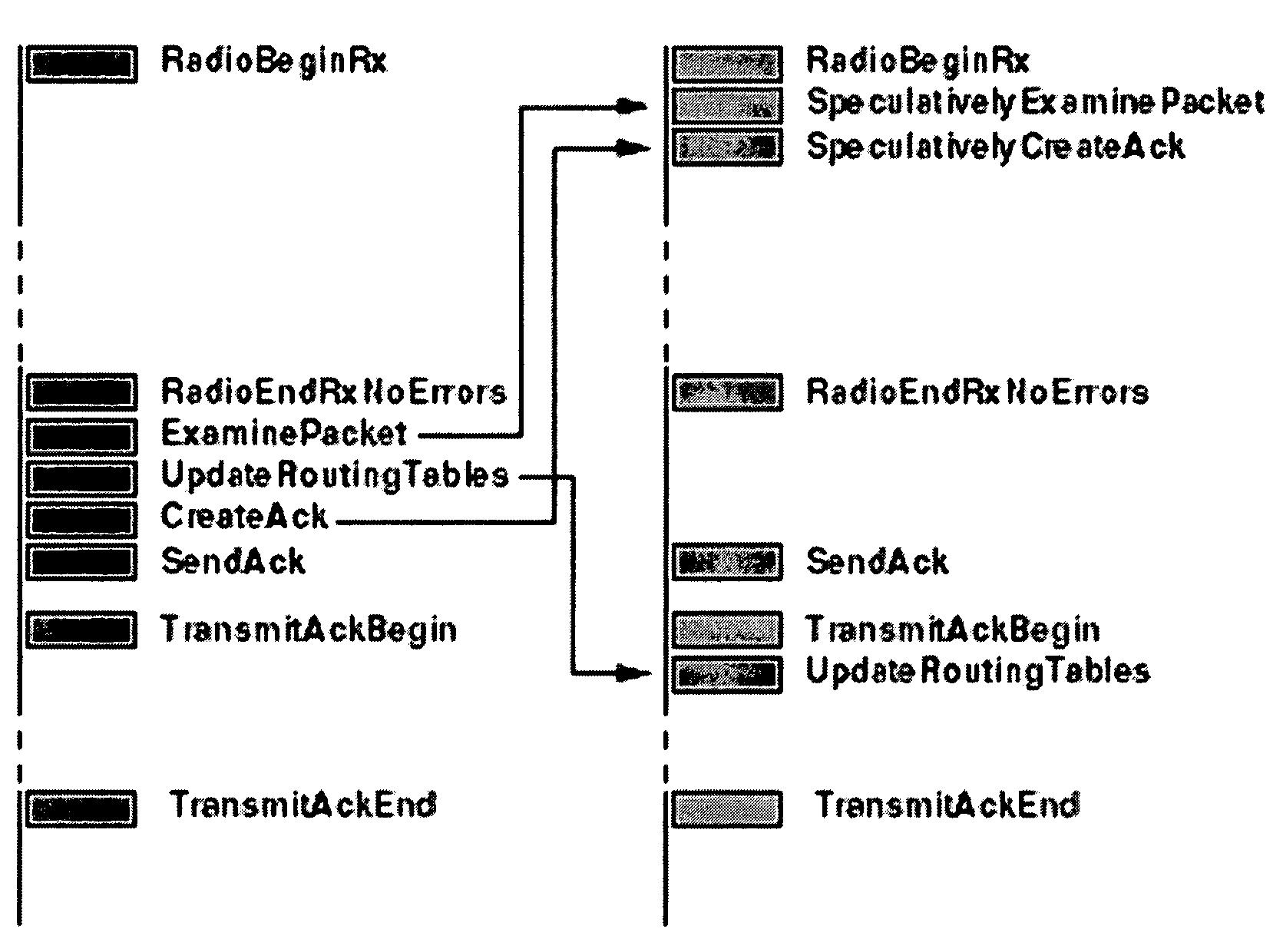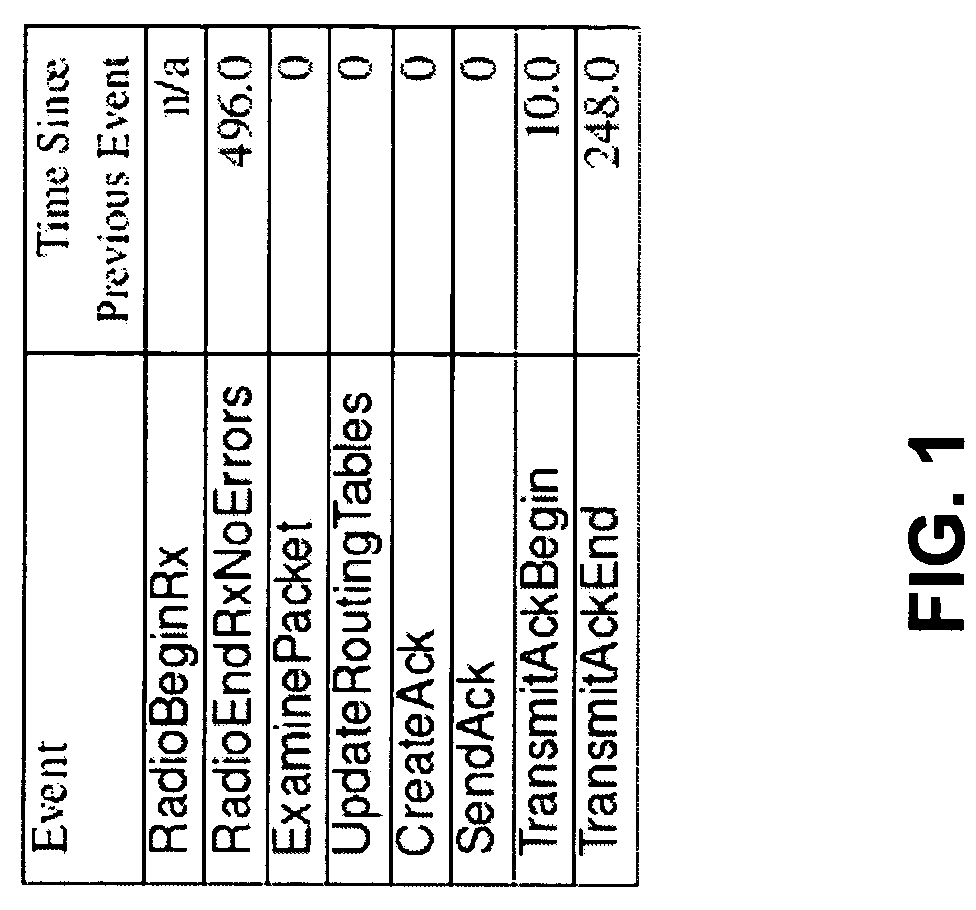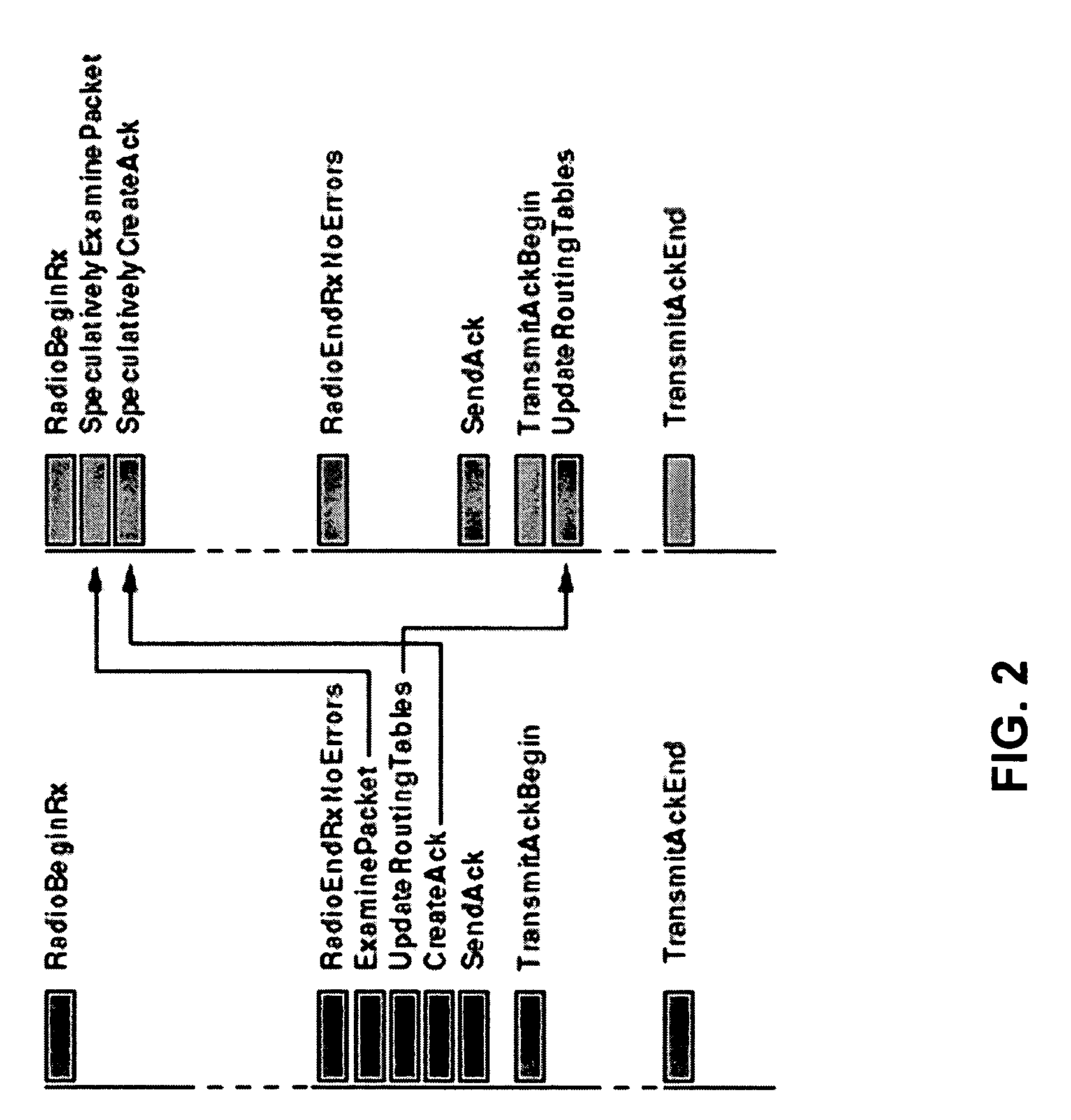Event-synchronization protocol for parallel simulation of large-scale wireless networks
a technology of large-scale wireless networks and event synchronization, applied in the direction of electrical/magnetic computing, analogue processes for specific applications, instruments, etc., can solve the problems of dramatically increasing the amount of time needed to run a network simulation, and the speed at which an lp can execute an even
- Summary
- Abstract
- Description
- Claims
- Application Information
AI Technical Summary
Benefits of technology
Problems solved by technology
Method used
Image
Examples
Embodiment Construction
[0023]The preferred embodiment of the invention comprises a TBS based sensor network simulation protocol and a network architecture for implementing the same. As discussed previously, a sensor network can be modeled with a number of LPs. An LP in a simulation using TBS becomes sure that it can execute a given event when the timestamp of the event is less than the scaled version of the elapsed real time since the simulation began. In other words, if the simulation has been executing for time t, then an LP can execute the event when the following inequality is true:
T<s×t (1)
[0024]where s is the time scale of the simulation (for the rest of the application, t will be used to represent the elapsed real time since a simulation began, and s to represent the time scale). When this inequality is true, then the event in question is said to be executable. It is easy to see that a parallel discrete event simulator (PDES) using TBS will execute correctly as long as every event arrives at it...
PUM
 Login to View More
Login to View More Abstract
Description
Claims
Application Information
 Login to View More
Login to View More - R&D
- Intellectual Property
- Life Sciences
- Materials
- Tech Scout
- Unparalleled Data Quality
- Higher Quality Content
- 60% Fewer Hallucinations
Browse by: Latest US Patents, China's latest patents, Technical Efficacy Thesaurus, Application Domain, Technology Topic, Popular Technical Reports.
© 2025 PatSnap. All rights reserved.Legal|Privacy policy|Modern Slavery Act Transparency Statement|Sitemap|About US| Contact US: help@patsnap.com



